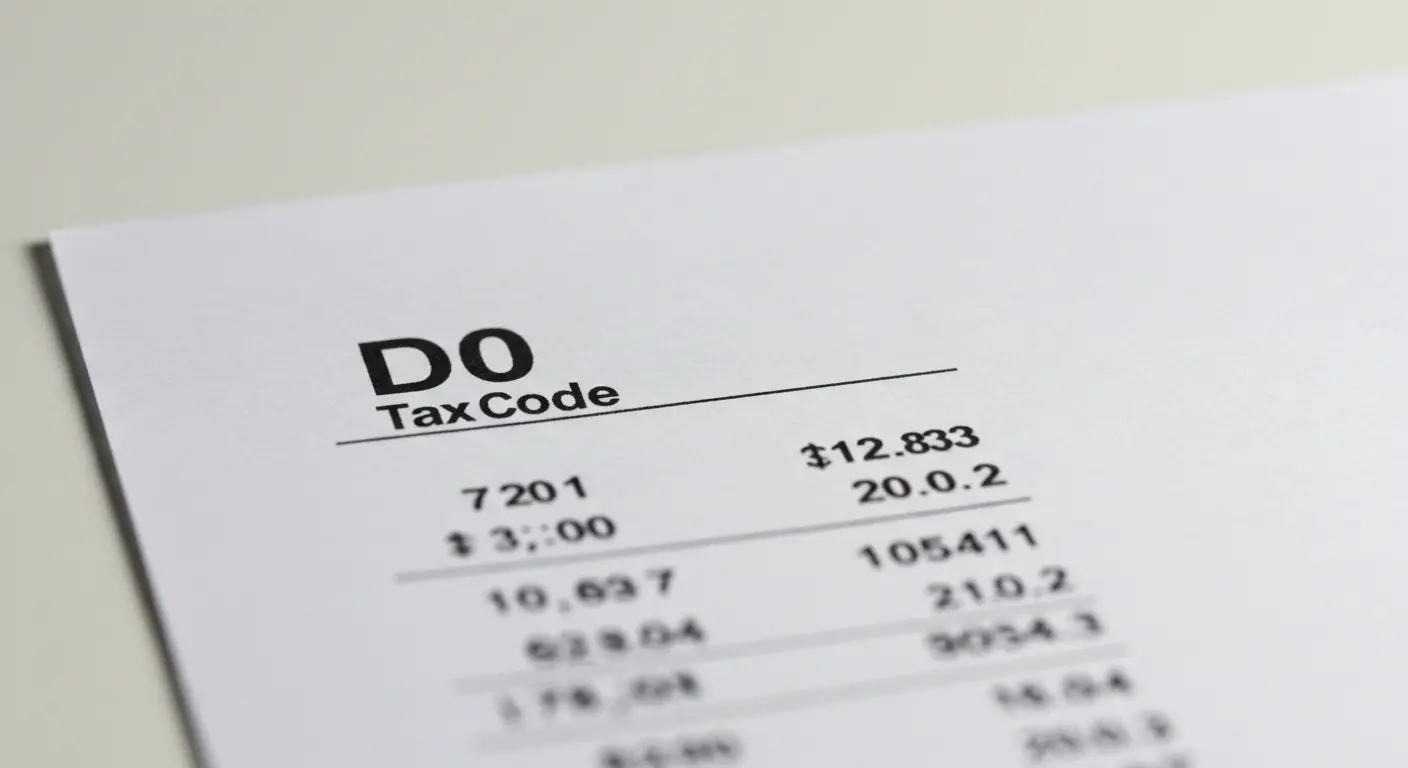What Is the D0 Tax Code?
HMRC uses the D0 tax code to show that a taxpayer’s income is subject to the higher 40% tax rate. When an individual has several sources of income and has already spent their personal allowance on one of those sources, this tax code is applicable. Employers and pension providers deduct tax at a higher rate without taking allowances into account when applying the D0 tax code to the impacted income.
Thanks to the D0 tax code that HMRC assigns, people pay the right amount of tax on their secondary earnings. Those who have several jobs or pensions are usually assigned this tax code. To find out how much tax is withheld under this code, use the D0 tax code calculator.
How Does the D0 Tax Code Affect Your Take-Home Pay?
Take-home pay is greatly impacted by having a D0 tax code since it indicates that all earnings from that employment or pension are subject to 40% tax. The D0 tax code list includes tax codes that apply a higher rate of taxation to particular earnings, in contrast to standard tax codes that take into account personal allowances and tax-free income.

For instance, if someone makes £20,000 from a second job that is subject to the D0 tax code and £30,000 from their primary job, the entire amount of the second job’s earnings is taxed at 40%, leaving only £12,000 after taxes. The precise tax deductions can be estimated with the use of a D0 tax code calculator.
Why Might You Be Assigned the D0 Tax Code?
When you have no tax-free personal allowance and all of your income is subject to higher or additional tax rates, you are assigned the D0 tax code. This typically occurs when your primary allowance has already been used elsewhere and you have several sources of income. For instance, under the D0 tax code, any secondary income such as a second job or a pension may be fully taxed at the higher rate of 40% or the additional rate of 45% if you have a primary job where your tax-free allowance is applied. This code is used by HMRC to make sure the right amount of tax is subtracted from your income without going over your allowance.
If your total earnings surpass the higher-rate threshold, which is normally around £50,270 annually in the UK, you may also be assigned the D0 tax code. People with commission-based income, bonuses, dividends, or earnings from self-employment in addition to a salaried job may be covered. You should get in touch with HMRC to request a review if you believe this code has been assigned incorrectly or if your financial circumstances change. In certain situations, you might be eligible for a tax refund if you were overcharged.
How Can You Check If Your Tax Code Is Correct?
To prevent paying too much or too little in taxes, it is crucial to verify that a tax code is accurate. Here are the top methods for confirming your D0 tax code:
- The tax code is displayed on your payslip.
- Online access to your HMRC Personal Tax Account.
- To determine whether deductions equal anticipated tax amounts, use a D0 tax code calculator.
- Making a direct inquiry to HMRC for clarification.
Workers who are unclear of their tax code D0 status should check their employer’s use of the correct tax code and their earnings allocation.
How D0 You Change Your Tax Code If It’s Incorrect?
You should get in touch with HMRC right away to request a correction if you think your tax code is off. Your payslip, P60, or Personal Tax Account on the HMRC website are the places to look up your tax code. HMRC will update your tax code and notify your employer or pension provider if your income, benefits, or tax-free allowances change and your tax code is incorrect. Starting a new job, receiving multiple sources of income, or receiving tax relief adjustments are common causes of incorrect tax codes.
You can use the HMRC app, update your information online, or give them a call to modify your tax code. Have your most recent paystub and National Insurance number on hand when you call HMRC. HMRC will reimburse you either directly to your bank or through payroll if an incorrect tax code results in an overpayment. HMRC may change your future tax code to collect any unpaid taxes. Maintaining current tax information helps you avoid unforeseen tax bills and guarantees that you pay the right amount annually.
What’s the Difference Between D0, D1, and D0 Tax Codes?
The D0 tax code list includes D0, D1, and D0 tax codes, each applying to different levels of taxation: The amount of tax withheld from an individual’s income is determined by the D0, D1, and D0 tax codes, especially for those who have multiple jobs or pensions. When a person’s personal allowance has already been deducted from another source of income, these tax codes come into play.
| Tax Code | Tax Rate | Applicable to |
|---|---|---|
| D0 | 40% | Secondary income over the basic rate threshold |
| D1 | 45% | Secondary income over the additional rate threshold |
| D0 | 40% | All earnings under this code are taxed at a higher rate |
The tax code D1 applies to those earning over £125,140, meaning their additional income is taxed at 45%. Meanwhile, the D0 tax code meaning indicates that all earnings under this code are taxed at 40%.
What Should You D0 If You’ve Overpaid Tax Under the D0 Tax Code?
If someone is incorrectly assigned the D0 tax code, they might overpay tax. How do I change my tax code process can help fix errors? However, if overpayment has already occurred, they should:
- Check the tax paid against the expected tax – Use a D0 tax code calculator for accuracy.
- Request a refund through HMRC – If overpaid, HMRC issues a refund.
- Update tax code for future payments – Prevent further overpayments by ensuring the correct tax code is applied.
If an individual has been taxed under tax code D0X, they might be due a refund if the code was applied incorrectly.
Conclusion
For higher-rate taxpayers to pay the correct tax on additional earnings, the D0 tax code is essential. It affects take-home pay by taxing secondary income at a rate of 40%. HMRC advises people with the D0 tax code to frequently check their tax code, particularly if they have several sources of income.
Knowing the correct code is crucial because the distinctions between the D0, D1, and D0 tax codes impact taxation levels. Taxpayers can correct their tax code and request refunds for any overpaid taxes by using the “how do you change your tax code” process. Accurate deduction estimation is ensured for taxpayers by using tools such as a D0 tax code calculator.
















